Your handy 1964–67 Chevrolet Chevelle buyer’s guide
The automotive market went through a series of sweeping changes in the early 1960s. Not the least of these was the rise of small-to-intermediate-size cars, vehicles that were cheap to build, affordable to buy, and popular with drivers who needed basic transportation at a reasonable price.
Chevrolet’s answer to the entry-level question was the 1964–67 Chevelle, a car that built on the lessons learned from the smaller Chevy II and ahead-of-its-time Corvair. Larger than both, but more modestly proportioned than full-size fare like the Impala, the intermediate Chevelle was an immediate homerun for the brand, with 1.6 million first-generation cars sold. (Click here to read about our recent drive of a ’67 Chevelle.)
Helping to propel Chevelle sales was its extreme versatility. Here was a car that could be ordered as a coupe, sedan, convertible, and a pair of wagons (two-door and four-door), outfitted with equipment ranging from barebones to respectably comfortable. Riding on GM’s all-new A-body platform, the Chevelle also birthed the reborn El Camino pickup, which added a cargo bed (and which is outside the scope of this buying guide), as well as the Malibu, which served time as a Chevelle trim level before graduating to its own nameplate. Most body styles featured the choice between frugal six-cylinder power or an upgrade to either small-block or big-block V-8, with the latter powering the iconic Malibu Super Sport and the SS396.
A big part of the Chevelle’s continuing popularity among collectors also has to do with how easy it is to modify. Capable of receiving nearly any small-block design in its capacious engine bay, and bolstered by an incredibly deep aftermarket, there are nearly as many customized Chevelles out there as there are numbers-matching originals, a fact underscored by just how cheap it can be to buy a rolling shell or even complete base car to use as a template for building an SS clone.
Charting the changes

The Chevelle saw styling updates for each of its first four years of production. The 1964 models are easily identifiable by way of their upright, egg-crate grilles, a feature that was replaced by a chrome bar that bisected the front end of the car for 1965. Both the ’64 and ’65 feature a rounded grille surround that encapsulates the headlights, with the ’65 adding a kink at the far edge. Changes are equally prominent at the rear, with the original split taillamps being replaced by one-piece units and the trunk filler swapping from chrome to black and adding C-H-E-V-R-O-L-E-T lettering across the center instead of across the top of the trunk lid.
The 1966 Chevelles have a canted front end, with the the front of the hood angled above the bumper and the bottom of the grille recessed into the fenders. Headlights are no longer flush but instead stick out, and the grille loses its center trim in favor of small horizontal bars. These bars become more prominent for 1967, which also loses the ’66 bumper cutouts in favor of one large cutout that slices across the entire unit and houses the turn signals. The hood is also smoothed back for ’67, and the fenders pushed forward to erase the previous year’s diagonal slice.
Angles are also the order of the day at the rear of the Chevelle. The 1966 edition features protruding fender edges that house curved rectangular taillights, while 1967 frenches those lights into the fender edges themselves and transforms them into triangles. A full-across trim piece is also present for ’67 in place of the ’66 model’s body-color backstop with chrome surround and Chevrolet logo center trim. Wagons feature different tailgate and taillight setups for each of the four first-generation model years.
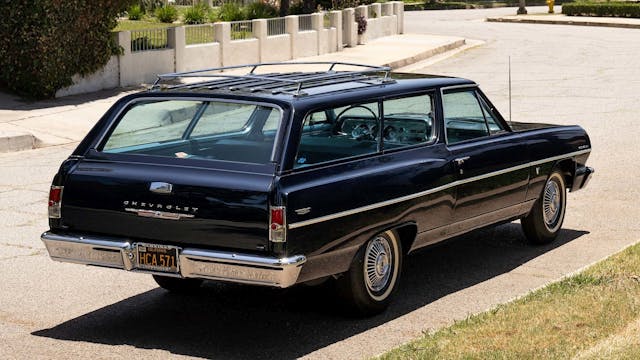
Chevelle trim levels (called “series” by GM) were fairly restrained. For 1964, buyers could choose between the base 300, the mid-tier Malibu, and the muscular Malibu SS. The latter two featured their own unique badging but otherwise matched lesser models in terms of styling. The following year the 300 Deluxe was added to the mix, and by 1966 the SS396 had replaced the Malibu SS. The final change of note is the Concours trim for 1967, which was wagon-only. Malibu SS and SS396 cars were sold exclusively as coupes or convertibles.
Equipment ran the gamut from stripped-down Taxi fleet cars all the way up to plush Malibus with full power accessories, power steering, air conditioning, and bucket seats. Optional gear included a Positraction limited-slip rear differential, a four-speed manual transmission (which replaced the column-shifted three-speed with a floor-shifter), and a two-speed PowerGlide automatic.

Engine choices for the 1964 Chevelle consisted of a pair of straight-six engines (a 194-cubic-inch unit good for 120 horsepower, and a 155 horsepower, 230-cu-in design), as well as two versions of the 283-cubic-inch small block V-8 (195-hp, two-barrel carburetor, and 230-hp four-barrel), and a pair of 327-cubic-inch V-8s (250-hp two-barrel, 300-hp four-barrel).
It’s important to point out that the Malibu SS was available with both V-8 and I-6 engines, and that ordering the model did not guarantee a high-performance engine under the hood. Similarly, in all years SS cars came standard with the three-speed manual, with the four-speed optional, as it was on nearly every other Chevelle.
Horsepower fluctuated somewhat for the I-6 and 283 for 1965, with the 327 gaining a third, 350-pony version, but the big news was the new 396-cu-in big-block L37 V-8 that added 375 horsepower and 420 lb-ft of torque in a very limited number (only 200) of Malibu SS models (also known as Z16 cars). This hydraulic cam motor was unique to 1965, and differed from the L78 396 offered by the Corvette that same year, and the Chevelle SS396 the following year.

A 396 big-block became standard in the newly created SS396 trim for 1966, available in 325-hp (L35), 360-hp (L34), and 375-hp (L78) editions, while the 327 returned to a single, 275-hp option on non-SS cars. For 1967, buyers were given an extra 325-hp, 327-cu-in V-8 to choose from, while the L34 big-block lost 10 hp and 5 lb-ft of torque. Only 612 L78-equipped SS396 cars were built that final year, due in part to the engine not being available until late April/early May 1967.
Who to know before inspection
If you’re looking for comprehensive online information about the Chevrolet Chevelle, it doesn’t get much better than Chevelle Stuff, which offers decoders for VINs, warranty cars, and trim tags; full lists of all options, features, and trim levels; and deep dives into every model year. It also features registries for a vast array of specific Chevelle models.
As with many muscle cars, those who have built companies dedicated to keeping these vehicles on the road are also excellent resources when it comes to digging into their history. We spoke to Roger Ausley of Ausley’s Chevelle Parts to get a better understanding of how to identify a ’64–67 Chevelle when looking at its VIN plate (located on the front hinge post of the driver’s door) and trim tag or body plate number (driver’s side firewall).
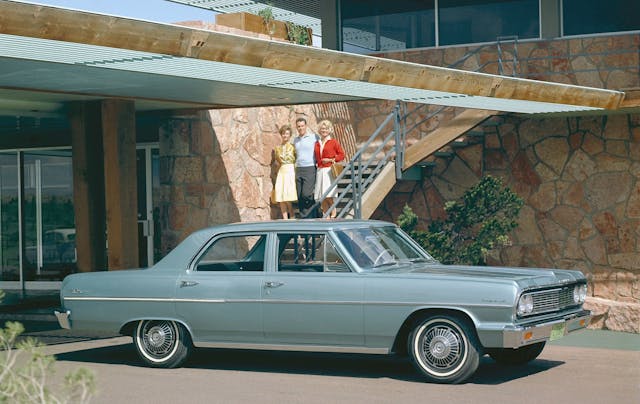
In 1964, the VIN was 11 digits and 1 letter, and for ’65–67 it shifted to 12 digits and 1 letter. In ’64, the first digit of the VIN is 4 to represent the model year. Canadian-built cars kept this going for 1965 and ’66, but American models shifted to a 1 as the first number from ’65 onwards, which indicates that the vehicle is a Chevrolet. The second number pair represents the series and engine type of the vehicle, with the next two digits indicating body style. In 1964, the letter that follows denotes the assembly plant (there were five in the United States), but for ’65–67 cars a number is inserted before the assembly-plant letter to show the production year. This is followed by the serial number, which always begins with a 1.
“The thing to keep in mind about serial numbers is that GM couldn’t do them sequentially,” Ausley explains. “Each number is specific to the plant where it was built, and that particular vehicle’s position on the assembly line.” This means that a Super Sport with serial number 00004 doesn’t mean it’s the fourth SS ever built, it just means it’s the fourth Chevelle—and even then, it’s the fourth Chevelle built at that specific plant.
There are also some details that only an expert would know that will help when inspecting a potential purchase.
“Prior to 1965, the VIN numbers were attached with two spot welds onto the door frame post, or they had rivets,” he continues. “In ’65, a federal law was passed that all VIN plates had to be attached with a rosette rivet. However, some 1965 model year cars were built in late 1964, so only ’65 model year Chevelles constructed after January of that year have this type of tag. This can lead to DOT claims that a VIN tag was removed and reinstalled, but it simply isn’t true, so you have to check the actual build date of the vehicle to authenticate the plate.”
Given that the Chevelle Malibu SS and SS396 are very easy to clone, it also helps to be prudent when inspecting the details that set these more desirable models apart.

“We have a series of videos on YouTube showing where the emblems on these cars are supposed to be,” says Ausley. “Badges in the wrong spot is one of the most common discrepancies you’ll encounter when looking at a clone car. We also have a tech-tips series that goes further into year-to-year changes between the cars.”
Sometimes the clues indicating you’re looking at a real Super Sport are so hidden as to be practically invisible.

“All SS models had a set of small brackets mounted to the rear lower control arms that weren’t on the regular Malibus, or any other Chevelles,” explains Ausley. “These were for 12-inch support bars that you won’t find anywhere else.” He also says that there were no SS El Caminos (just cars featuring optional big-blocks), and that while no Chevelle came with a 427-cubic-inch V-8 from the factory, some dealers did install them after delivery to skirt GM rules about big-block engines in intermediate platforms in that era.
Ultimately, according to Ausley, the best way to authenticate a potential purchase is to ask for as much documentation from the seller as possible. This includes the original bill of sale, a build sheet, and any paperwork available from the original owners, all of which are considered the gold standard when paying for a high-dollar car.
Before you buy

Mechanically, the 1964–67 Chevelle is rock-solid. With a choice between basic small-block Chevy engines, stout straight-sixes, and well-understood big-blocks, the only issues you’ll encounter in the engine bay are related to age and mileage and can be addressed as they would in any other vehicle. Suspensions, rear ends, and transmissions are similarly uncomplicated, and parts availability is excellent across the board (including a strong market for reproduction pieces and sheetmetal).
“Keep an eye on the floorboard on the passenger side, as that’s where leaking heater cores tended to trigger rust,” Ausley says. Other areas with rust related to poor drainage include the rear corners of the back window, behind the rear wheels, and the bottoms of the front fenders. He also points to the door bottoms (where drains were blocked by pieces of the fuzzy window sweeps falling into the door) and later cars that used butyl tape instead of a gasket to seal the windshield as further areas of concern.
“Keep in mind, GM was not interested in a car that lasted 30 years,” he explained. “They wanted to build a car that lasted three years, so you’d have to buy a new one.”
What to pay

For up-to-date values of the exact Chevelle you’re shopping, consult the Hagerty Valuation Tool. For a breakdown of Hagerty’s 1-to-4 vehicle-condition rating system, click here.
The original Chevrolet Chevelle remains a popular choice with collectors. With prices for sparsely equipped six-cylinder sedans hovering just above the $10,000 mark for Excellent, or #2 condition, examples, the Chevelle provides an easy entry point into the hobby, especially when looking at even more affordable #3 (Good) condition driver-quality examples.
That being said, coupes and convertibles featuring V-8 power can easily double or triple that price in #1 (Concours) or even #2 condition, to say nothing of the Super Sport, which can range from $50,000 to over $100,000 (not including outliers like the ultra-rare Z16 V-8 SS models that jump to nearly $200K). Values have risen nearly 20 percent across the board for the Chevelle over the past three years, based on Hagerty quotes, with strong interest from both baby boomers and Gen X representing the majority of those making inquiries.
As with any classic, it’s in your best interest to purchase the best-condition vehicle you can afford rather than target a cheaper, project-level Chevelle. Although you won’t have any trouble locating new or used parts, outside of investment-grade blue-chip models, the labor and investment required to restore an old automobile almost always eclipses its actual value.
***
Check out the Hagerty Media homepage so you don’t miss a single story, or better yet, bookmark it. To get our best stories delivered right to your inbox, subscribe to our newsletters.



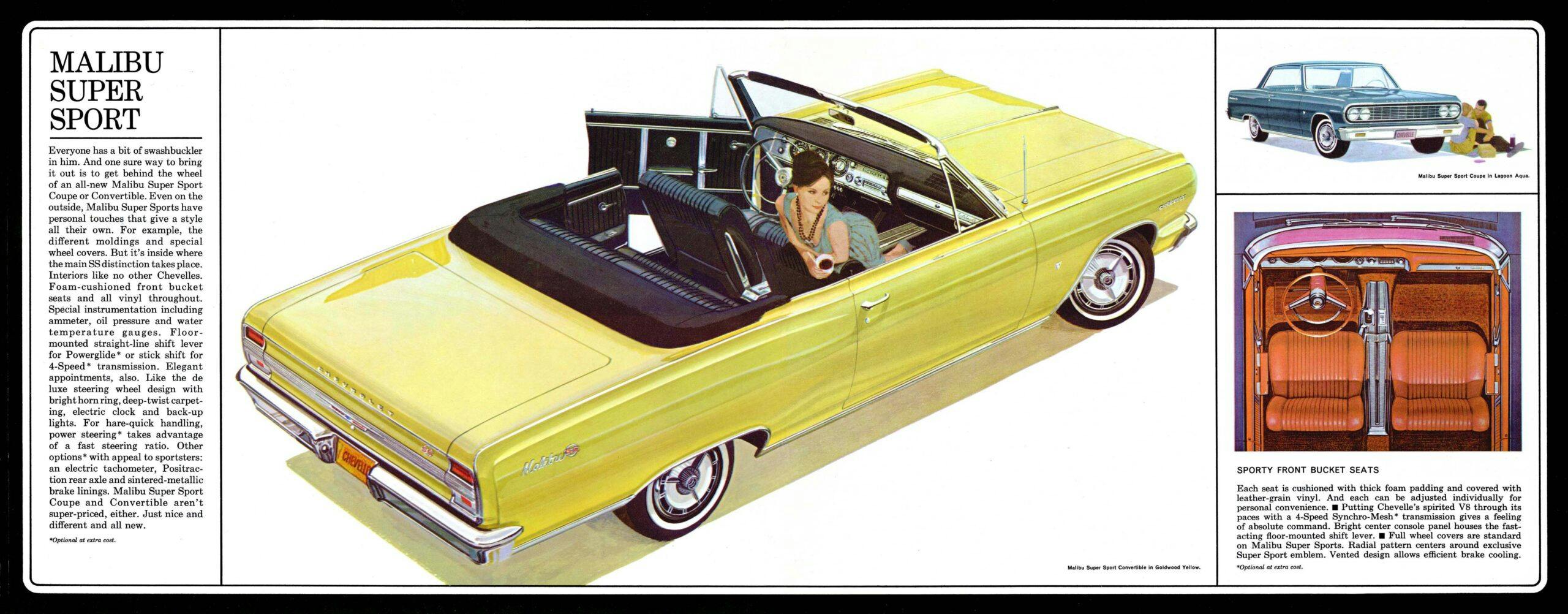
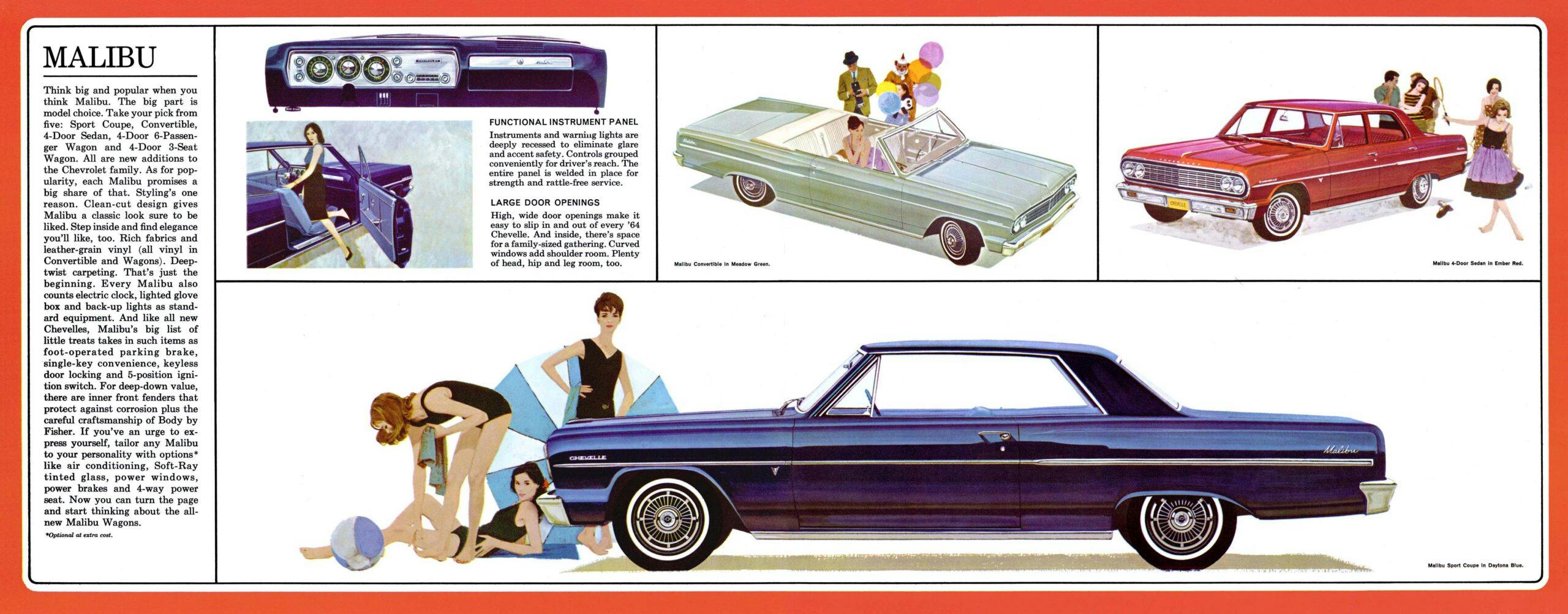
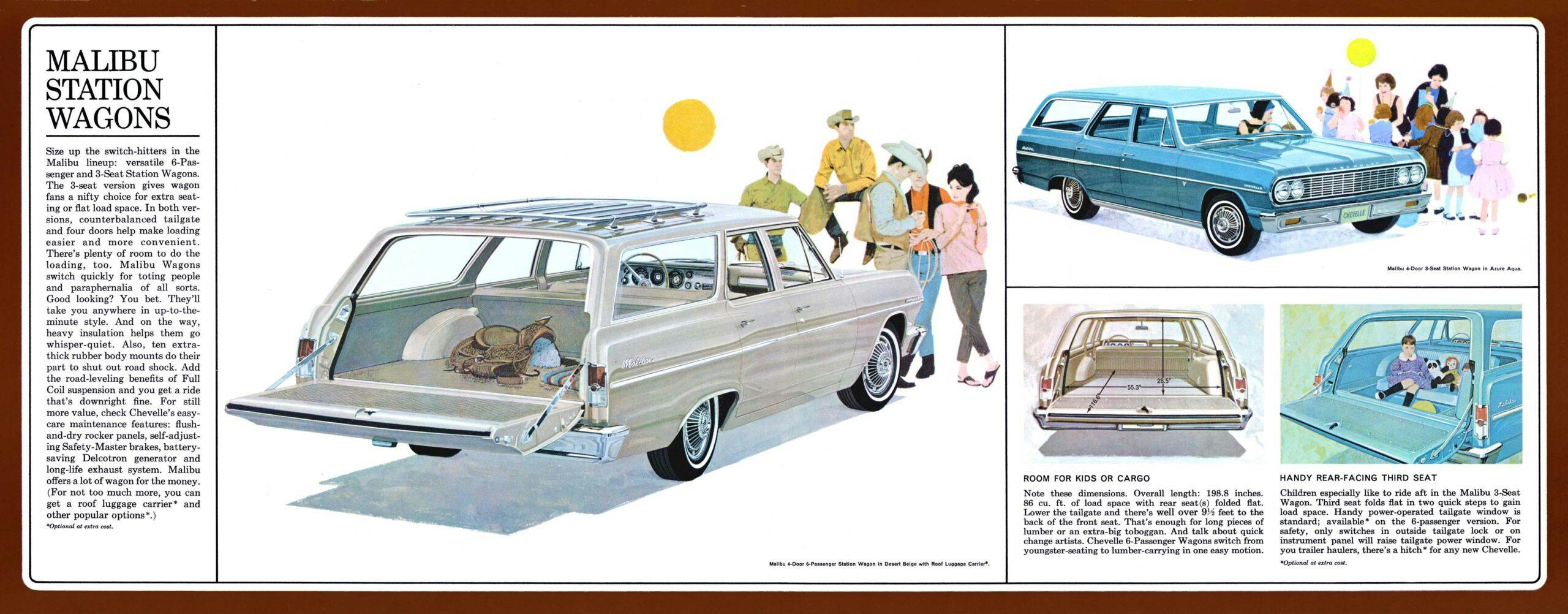
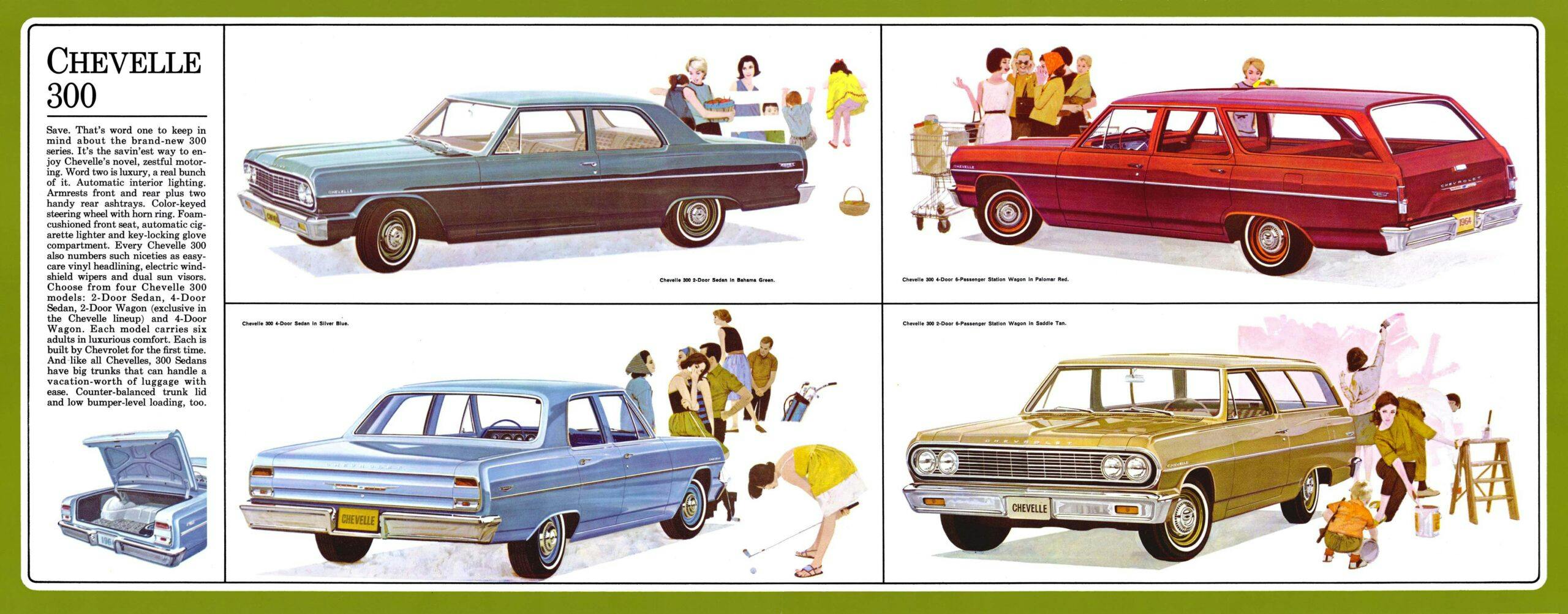
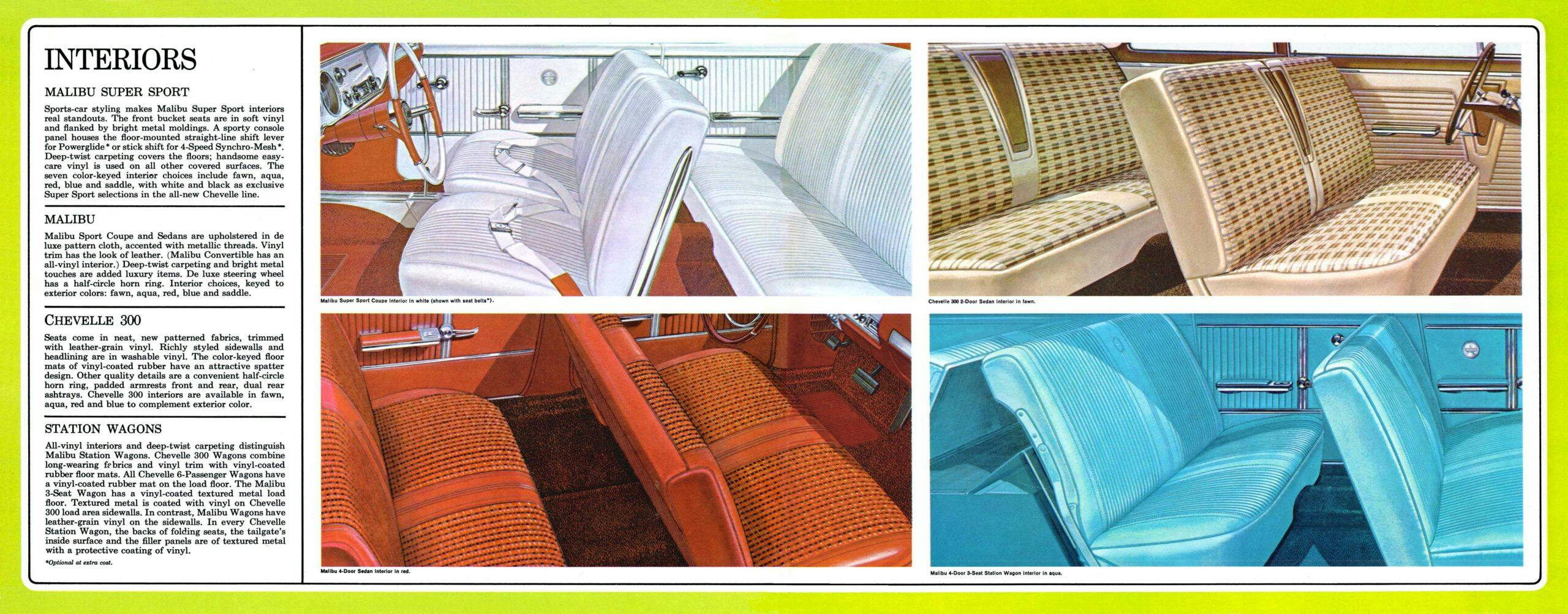
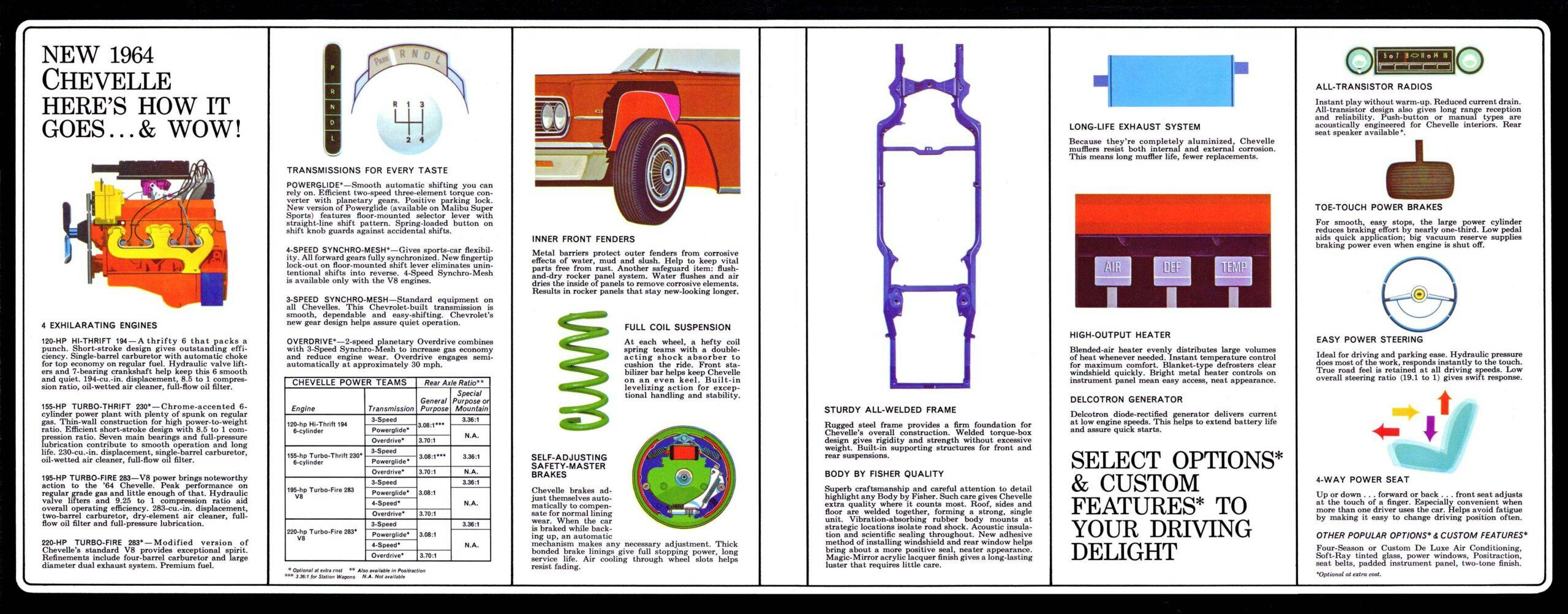



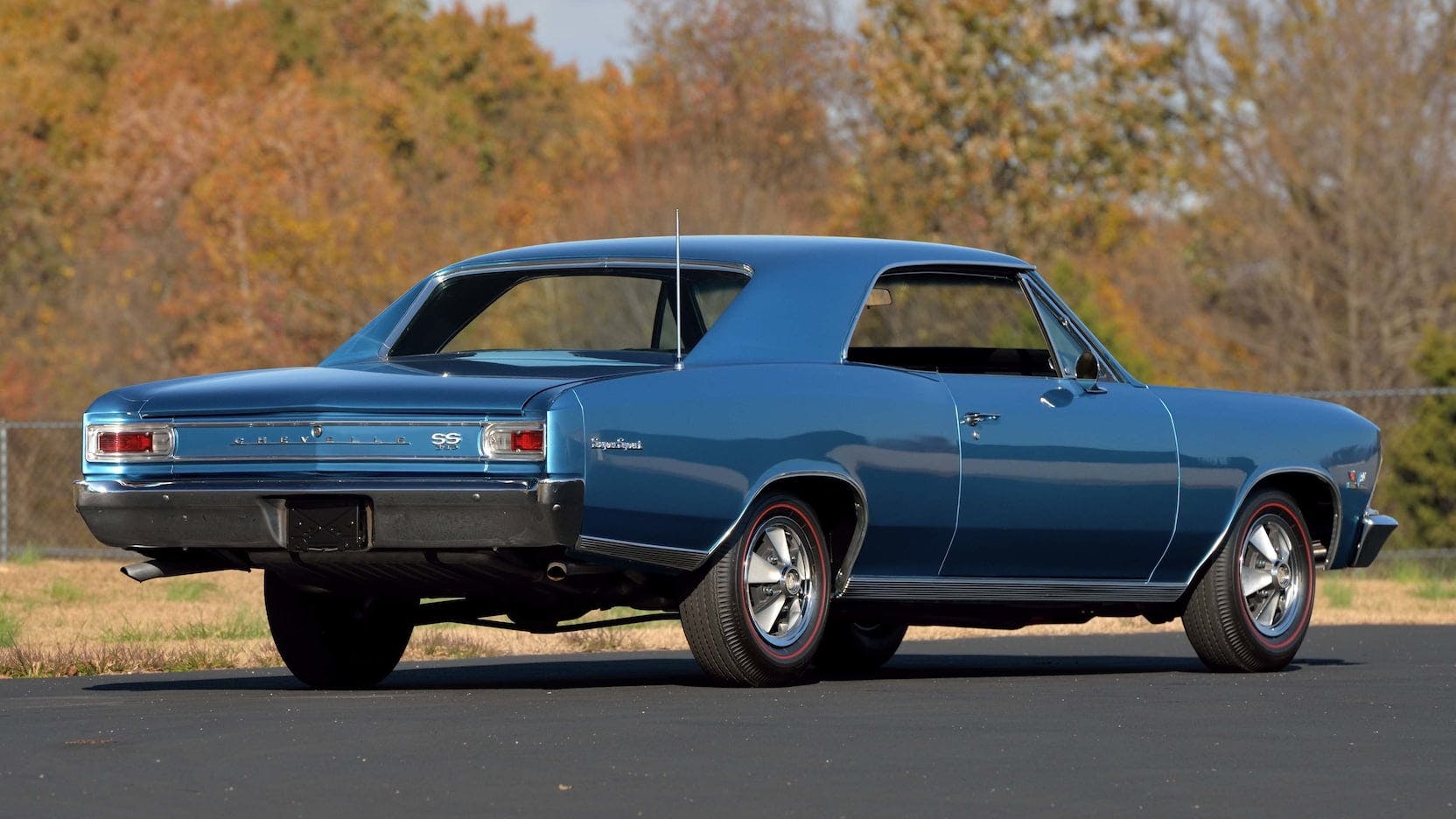
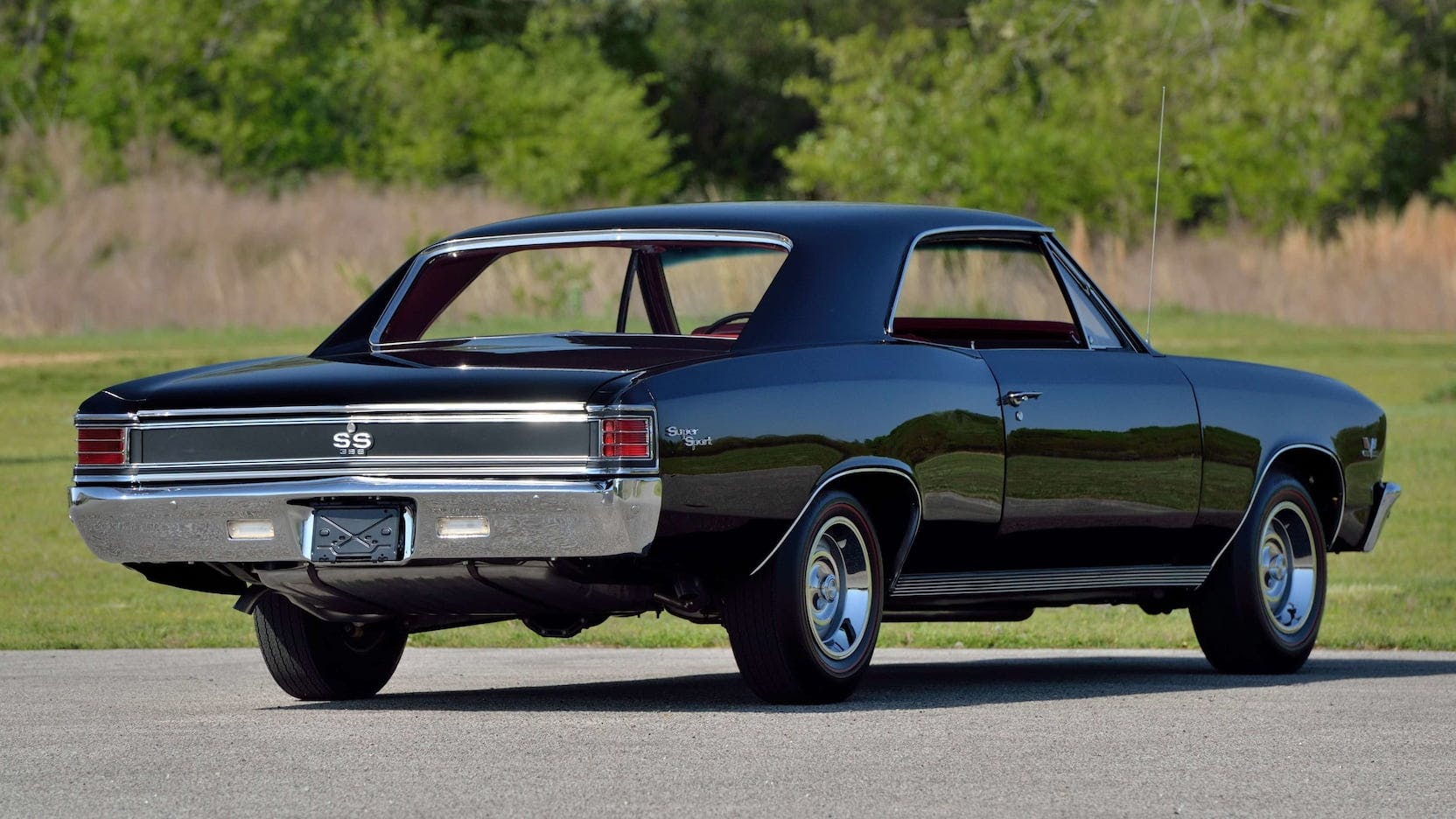

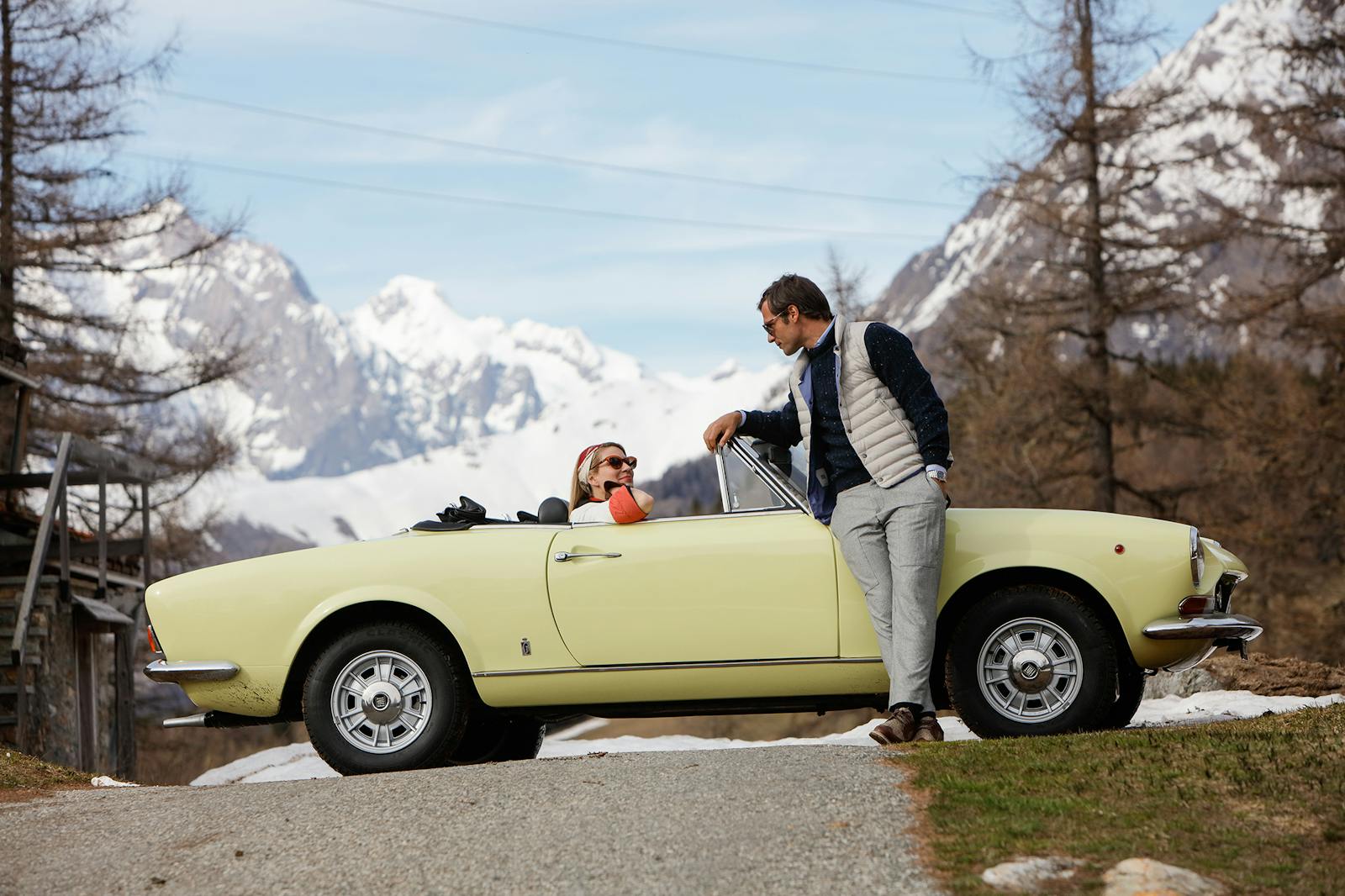
Love the 2 door wagon! Almost as cool as a 1964-65 Falcon 2 door wagon.
I was 13 in 64. A lady my mom worked with in the elementary school cafeteria drove a sweet little 64 6 cylinder pale yellow ss two door hardtop. Loved that one. My farmer neighbor bought a 65 Malibu convertible from his brother in law when it was about two years old. Was a 283, 3 on the tree, manually operated top. Silver blue with a black top… Another sweet ride
Great article. I would also disagree with the statement that 60’s GM cars were only built to last 3 years. My dad bought a 65 Impala in 1974 (8 years before I was born) and it was our family car until 2004, and it is still registered today. Has never lapsed. I spent a lot of time riding in that car! It hit 250,000 in 1996, I have a picture of me standing in front of at 1/4 million. It hasn’t seen many miles since 2004 but it has 279,000 miles on the original 327 and power glide transmission. The only work the engine has has was a new timing chain in the 90’s. Heads have never been off that 327! I’d say that’s great service. A little past 3 years. One day I hope to get around to restoring it, it is pretty rough at this point.
Well I guess I should add my 2 bits worth on this one. I was a kid working after school at the local Chevy dealer. We got 2 -64 Chevelles as soon as the new cars were out but thats all we could get. A dk blue 4 dr 283 glide and a butternut yellow 284 4 sp convert. If you wanted a Chevelle you had to order one. The boss told us to get out and drive the demos so people would see them and place an order. I got to use the convert to deliver parts and ferry customers to and from home. ( I usually included a pass by my local high school too) I always wanted a 64 -65 Convertible and I finally got one in 2007. It was a 283 SS in red with white top and interior. Over the next 10 years I poured every spare buck and all my free time into that car. It was great up until I attended a “Good Guys” event in Puyallup Wa. and it was stolen. The worst day of my life. The car had a full Air Ride/ full handling suspension /ZZ5 crate engine /700 R4 trans/ Stainless Steel brakes/Sony sound system/ Dynamat/ 3:36 posi 10 bolt/ Bi Zenon headlights/American Autowire kit with all led bulbs and so on. I live in BC (Canada) and we have mandatory Govt’ run Insurance. I tried for 2 years to get the correct coverage to cover the value ( appraised) of the car and in the end I got a bit more than 1/2 of the appraised value. I gave the Ins. Co. my receipts for all of the parts I had used (no labour) which added up to $45,000 for which I received $5000. I guess this could be an ad for Hagerty and I wish I had known about them back then. I was told by my Ins. Co. that I had the only policy available to me. Tough lesson! Anyway, I don’t know if my car is still out there, it was traded off to a flipper by the guy that took it but I never got the car back. The Wash Police were great and did their best but nobody knows where it ended up. They got the guy but not the car. Thanks for a great article.
Bought a one year old 1966 Chevelle Malibu that came from the factory with 327/375 HP. And Saginaw 4 speed. Rear end was 3.08 to one, good for fuel economy but not for get up and go. It was only a few months until I put a Chevy 30 30 solid lifter cam with a 3 degree retard spacer on the cam gear. Don’t know what the actual H.P. was but there was no 396 that could come close to its 1/4 mile times. The iron case Saginaw didn’t last long either. The other change was the rear end for a 4.10 unit. What a difference! Unfortunately 2 years later on 0 degree evening it spun on sheet of ice and was totalled. Was sick for months after that.
My fourth 67 is an SS clone, Just won Best of Show at a car show here in east Texas , my first time to enter it in a show. Its a beautiful red 396 convertible in almost mint condition. My first 67 Chevelle was a yellow 3 on the tree 230 6 cylinder convertible, bought new.
Great article about a classic American car. Enjoyed reading about the specs of the 64-67 Chevelles. I’m the second owner since 81 of a 65 300 4 door sedan with the original 230 6 cylinder, power glide with 106,000 original miles that still runs great. Can’t kill those straight 6s if maintained. Have the original protect-o-plate. Did some floor pan and minor body work, interior restoration and repaint in Red Hot. Get a lot of compliments cruising around my second home in the Lake George area upstate NY.